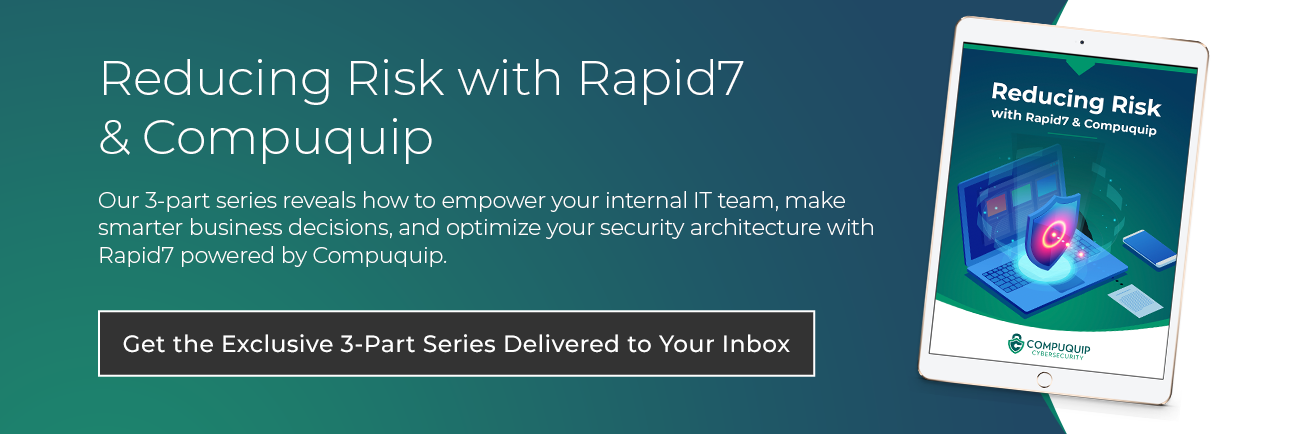What is Risk Management and Why Does It Matter to You?
Everybody wants to know that their businesses are as secure as possible from cybersecurity threats. Part of an effective cybersecurity plan is knowing how to identify security risks and mitigate them. However, many people tend to get cybersecurity risk management confused with cyber threat management.
What is risk management in cybersecurity? Why does it matter? More importantly, how can you manage security risks in your organization effectively?
What is Risk Management in Cybersecurity?
While risk management is closely tied to cyber threat management, it’s important to know that the two terms are very distinct from one another. To put the distinction as simply as possible:
- Cyber Threats generally refers to an attack method or strategy carried out by some malicious actor (whether they’re an insider or outsider).
- Cybersecurity Risks is the term for how likely a threat is as well as the potential impact of the threat.
For example, a ransomware attack is a cyber threat. However, the loss of data access caused by the ransomware attack is the cybersecurity risk.
So, what is risk management for cybersecurity? It’s the practice of assessing your cybersecurity risks to identify the ones that are the most likely to happen and will have the biggest impact, then applying controls that mitigate those specific risks.
Why Does Managing Security Risks Matter?
The main reason why cybersecurity risk management matters is that it has a direct impact on the long-term success and viability of your business. Having strict risk management controls in place acts as a kind of insurance against the impacts of cyber threats, helping to minimize them. This, in turn, allows your organization to avoid the worst impacts of cybersecurity breaches.
For example, say there are two companies that we’ll call A and B. Company A researched how to manage security risks and decided to run a risk assessment that highlighted ransomware as being particularly dangerous. Company B, though vulnerable to the exact same cyber threat, did not run any risk assessments, and thus never discovered their vulnerability.
Company A then starts to implement some anti-ransomware measures, such as creating a remote backup of their data that they can restore their local drives from in case of an emergency. Company B does nothing. Fast forward a few months, and both companies are hit with a ransomware attack. Company A’s local drives are down for a few hours as they wipe and reformat them to eliminate the ransomware, then they restore from the remote backup and things are back to normal. Company B’s drive go down for days as they try to decrypt their corrupted drives, only to have to pay the ransom just before the attacker’s deadline. Even when they decrypt the drives with the right key, some of the data is lost for good because the ransomware permanently scrambled it.
By proactively working to mitigate their risks, Company A was able to minimize the impact of the ransomware attack.
How to Manage Security Risks in Your Organization
So, how can you mitigate security risks for your organization? Here’s a simple process:
- Define What You Need to Protect. Before anything else, it’s important to establish what it is that you absolutely need to protect, and what is simply “nice to have.” Doing so helps you prioritize your risk management measures for the best impact for the money spent. Some organizations prefer to focus on their regulatory requirements first, such as PCI DSS or HIPAA.
- Create Cyber Threat Impact Estimates. After defining which assets you need to protect, create some estimates of what specific impacts different cyber threats would have. For example, if a hacker managed to steal sensitive data, what would the cost be for your organization to provide identity theft protection to all affected customers? Or, if you were hit with ransomware, how much business would you lose for every hour your systems were unusable? This helps you prioritize your cybersecurity efforts to have the biggest impact for the smallest initial investment.
- Estimate the Likelihood of Each Cyber Threat. Aside from the impact of each cyber threat, it’s important to consider their likelihood as well. Here, you’ll probably need to use a cyber threat intelligence feed to help identify the most popular cyber threats and which types of attackers are the most likely to target your organization. It may also help to look at your current protections to see if they effectively counter your biggest risks.
- Define Your Tolerance for Risk. Unfortunately, no cybersecurity risk management strategy can be perfect—there’s simply no way for any one organization to protect against every possible cyber threat. So, it’s important to define an acceptable level of risk, or how much impact you can take, and focus on securing your most critical assets. This helps you optimize your ROI for your cybersecurity investments.
Do you need help assessing and managing security risks in your organization? Reach out to Compuquip to get started!

